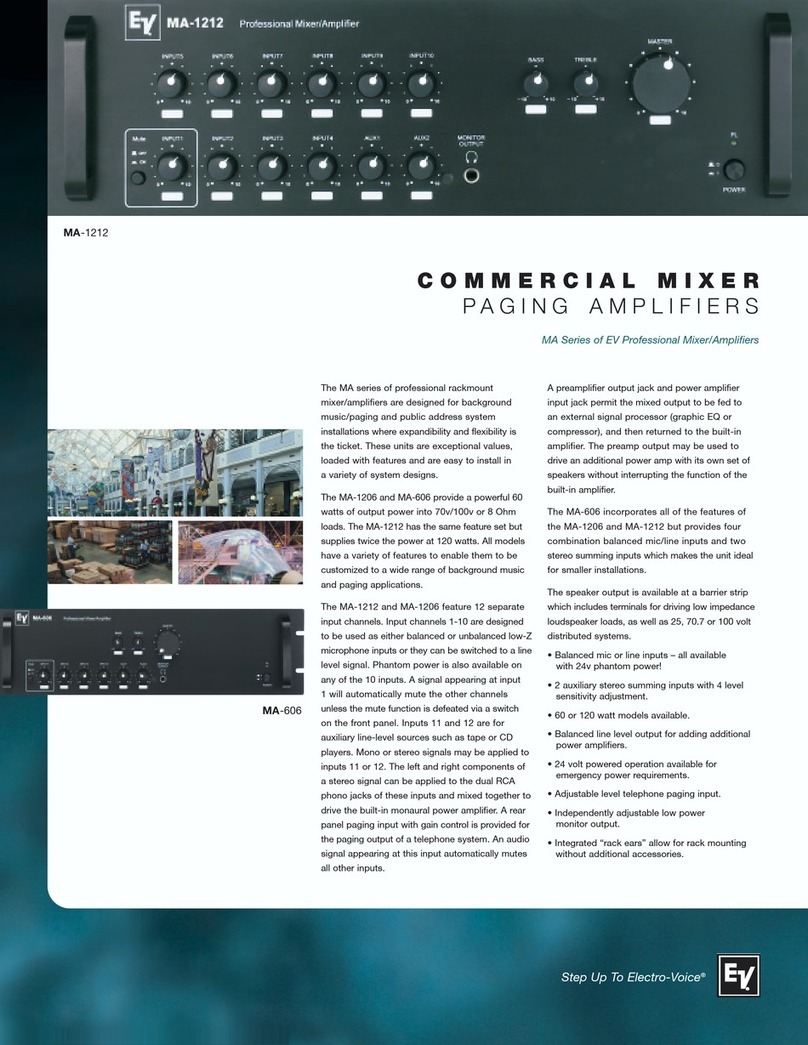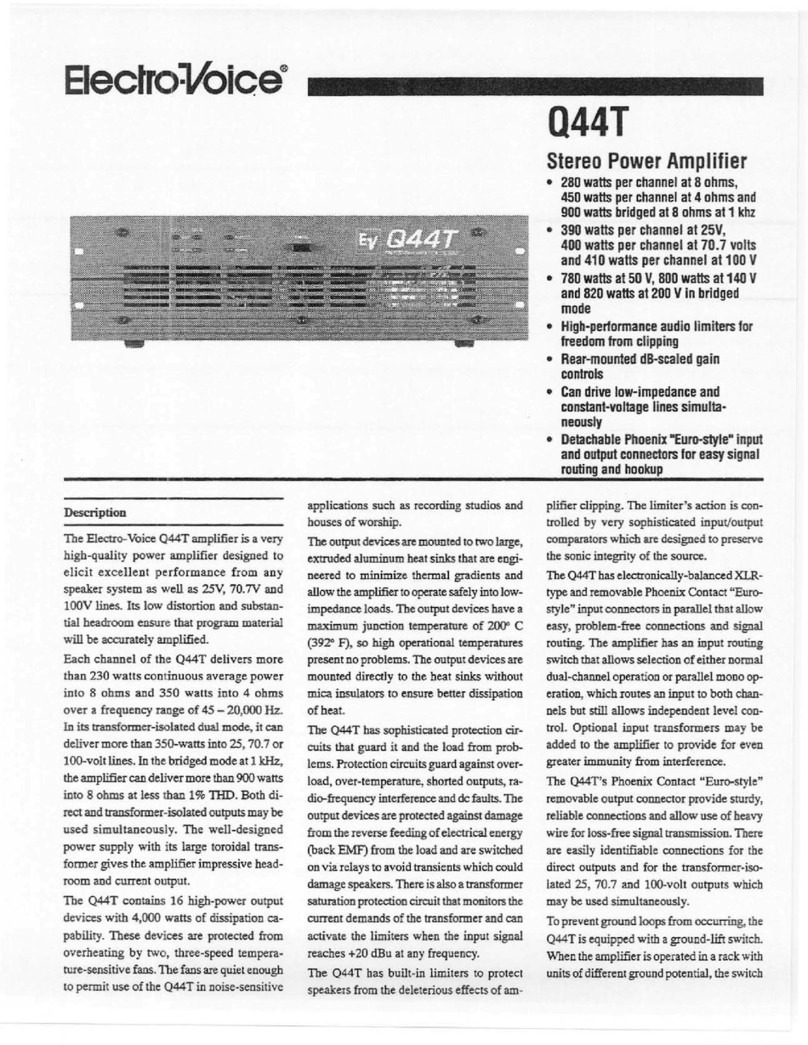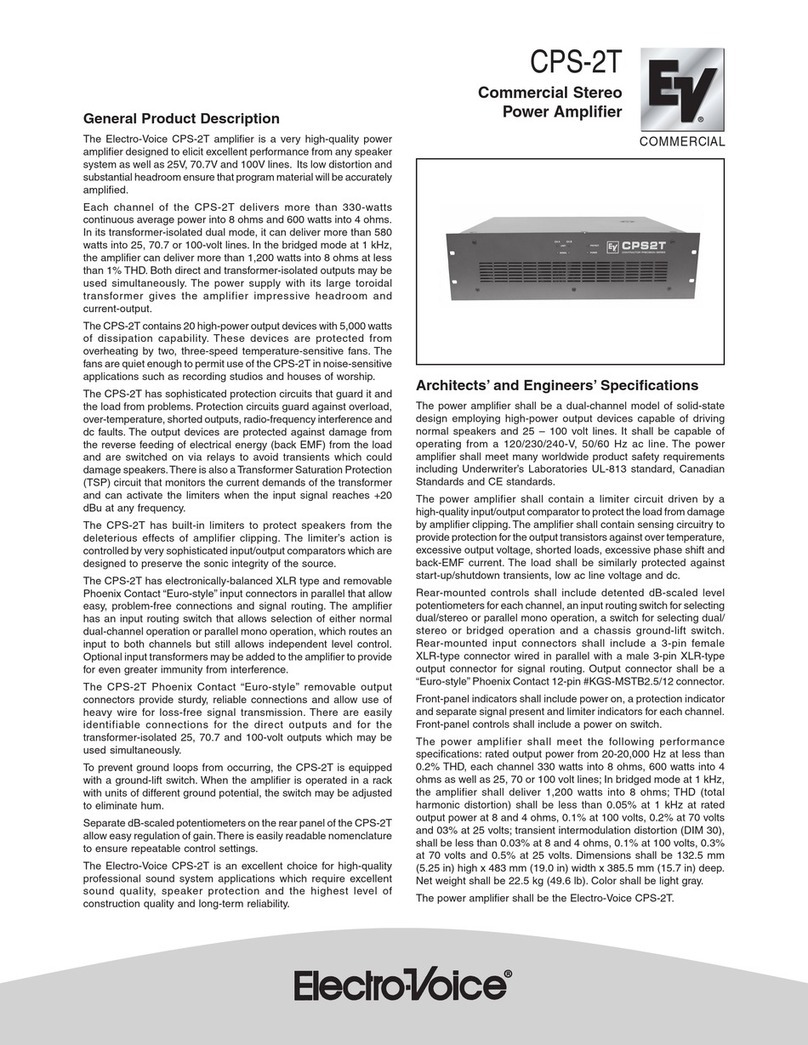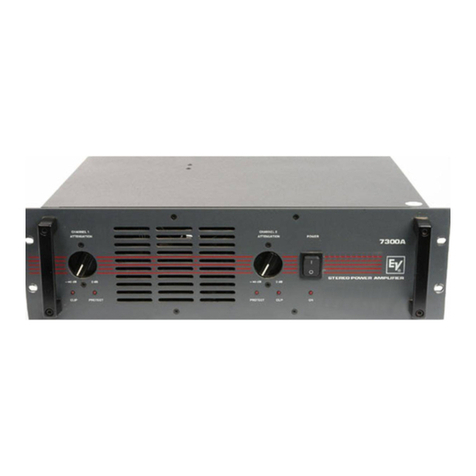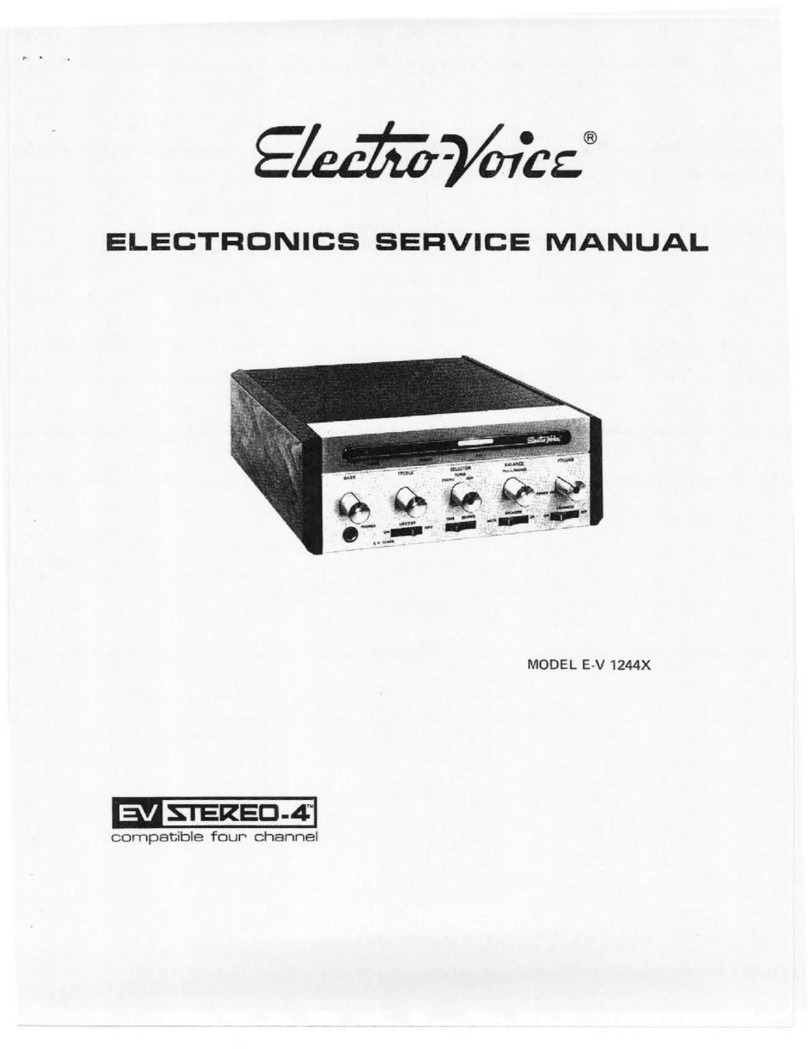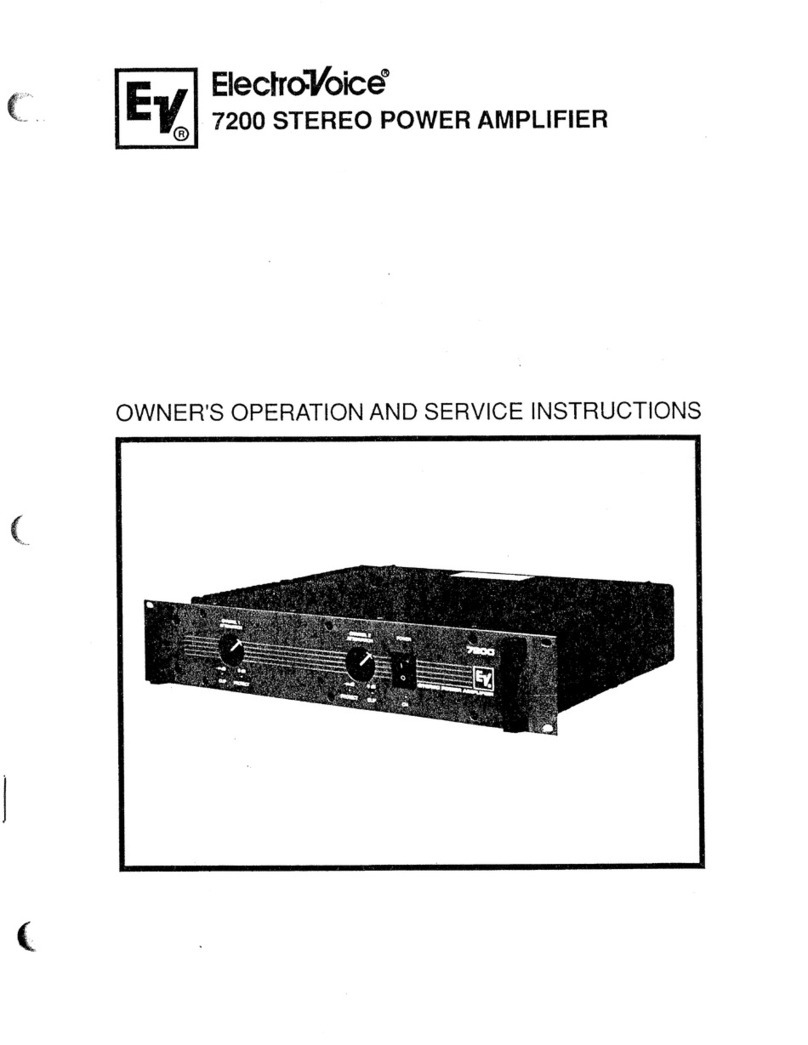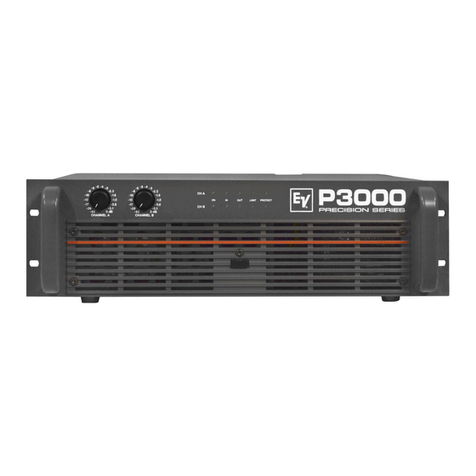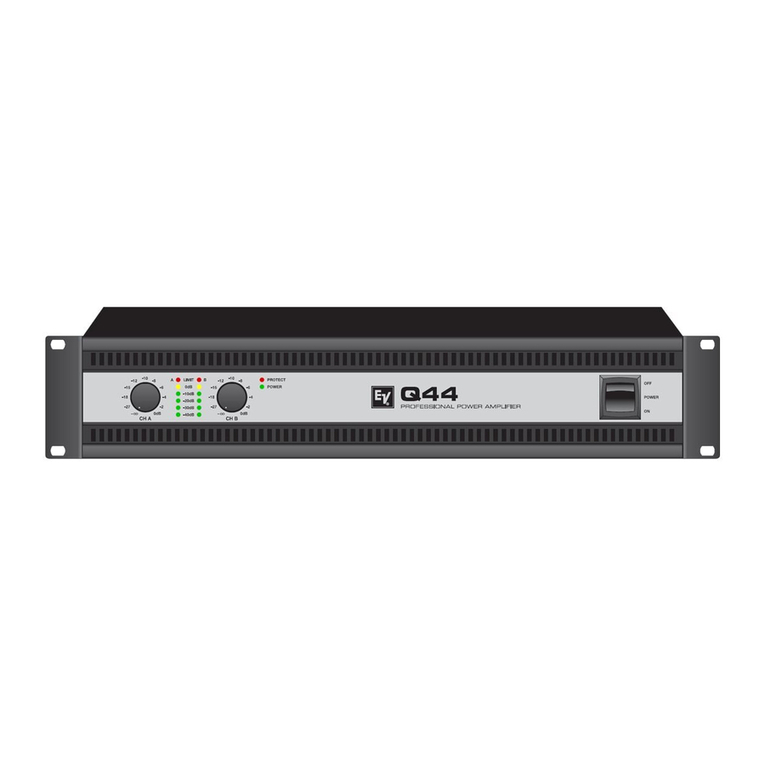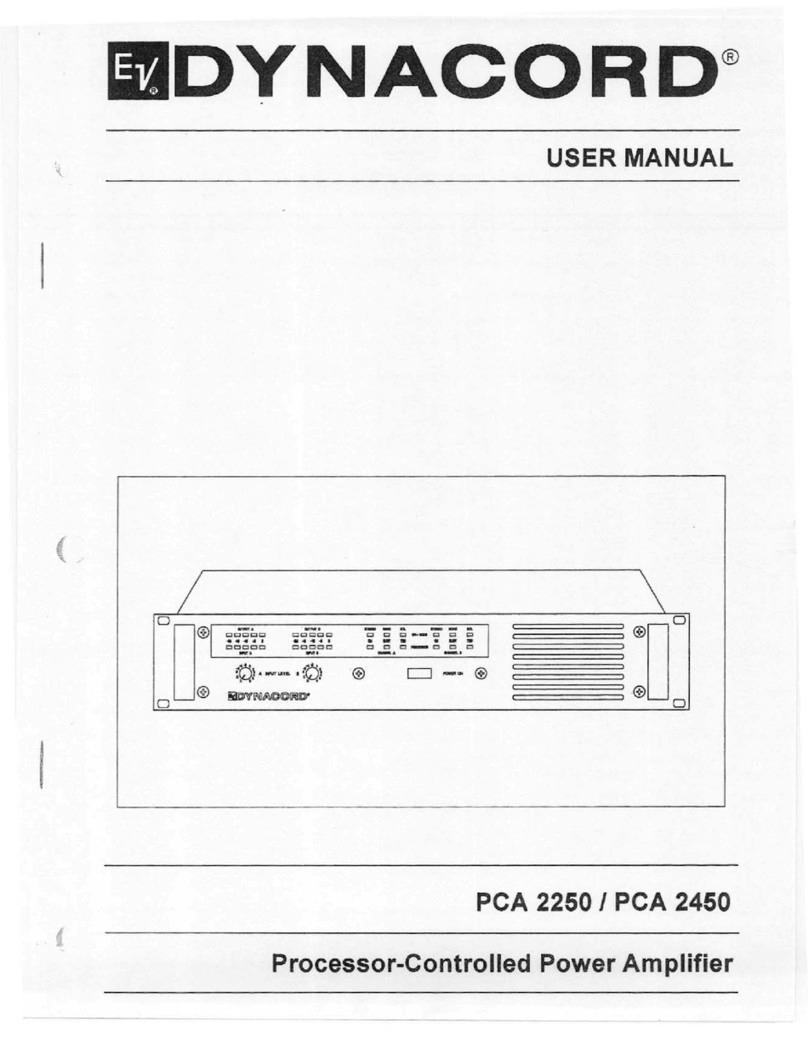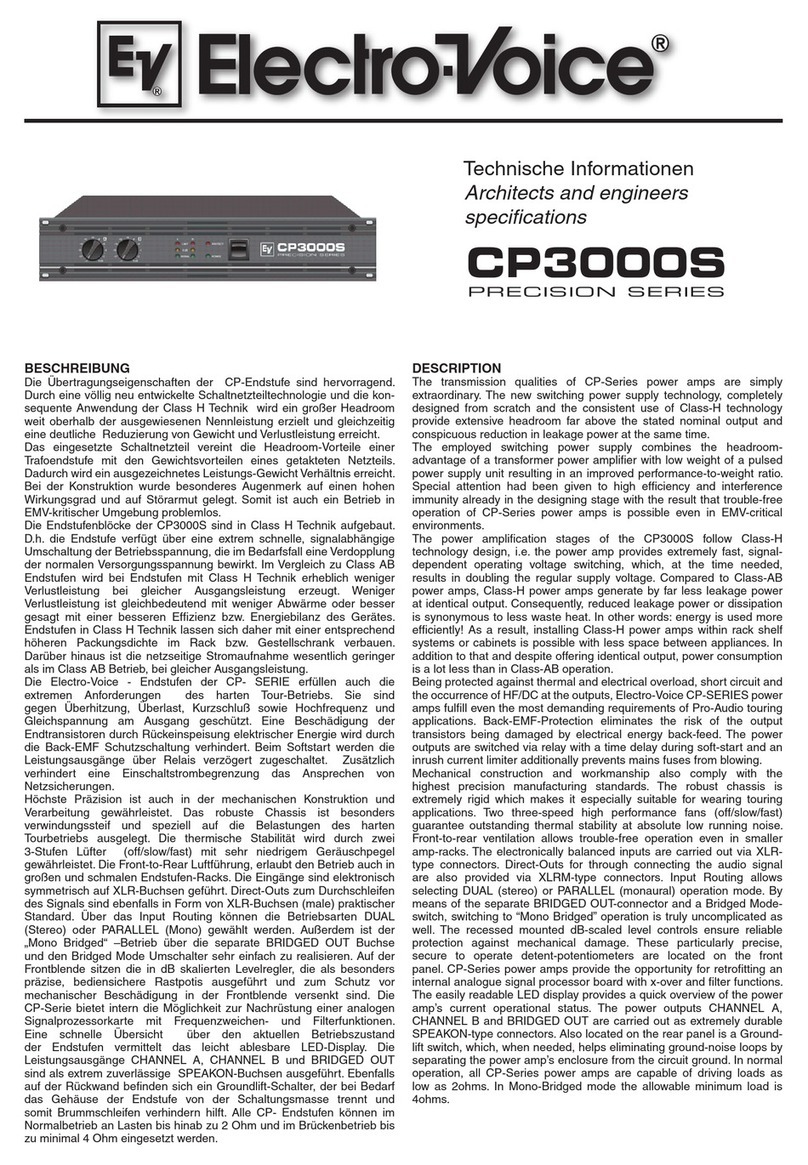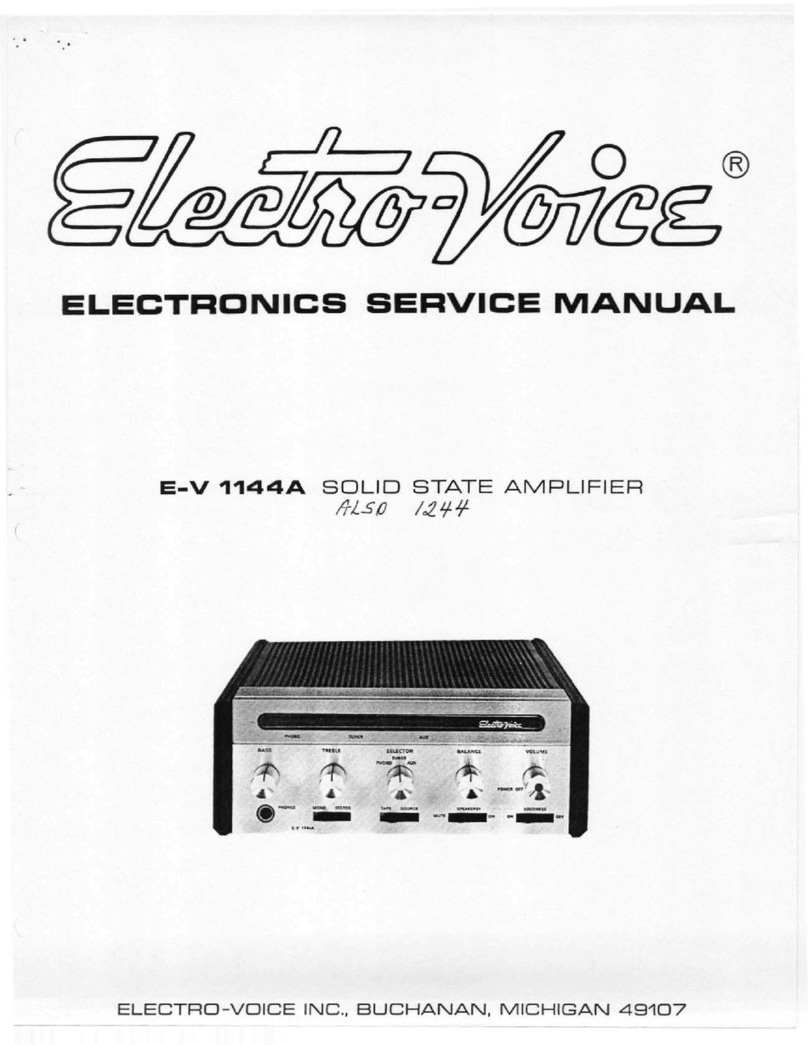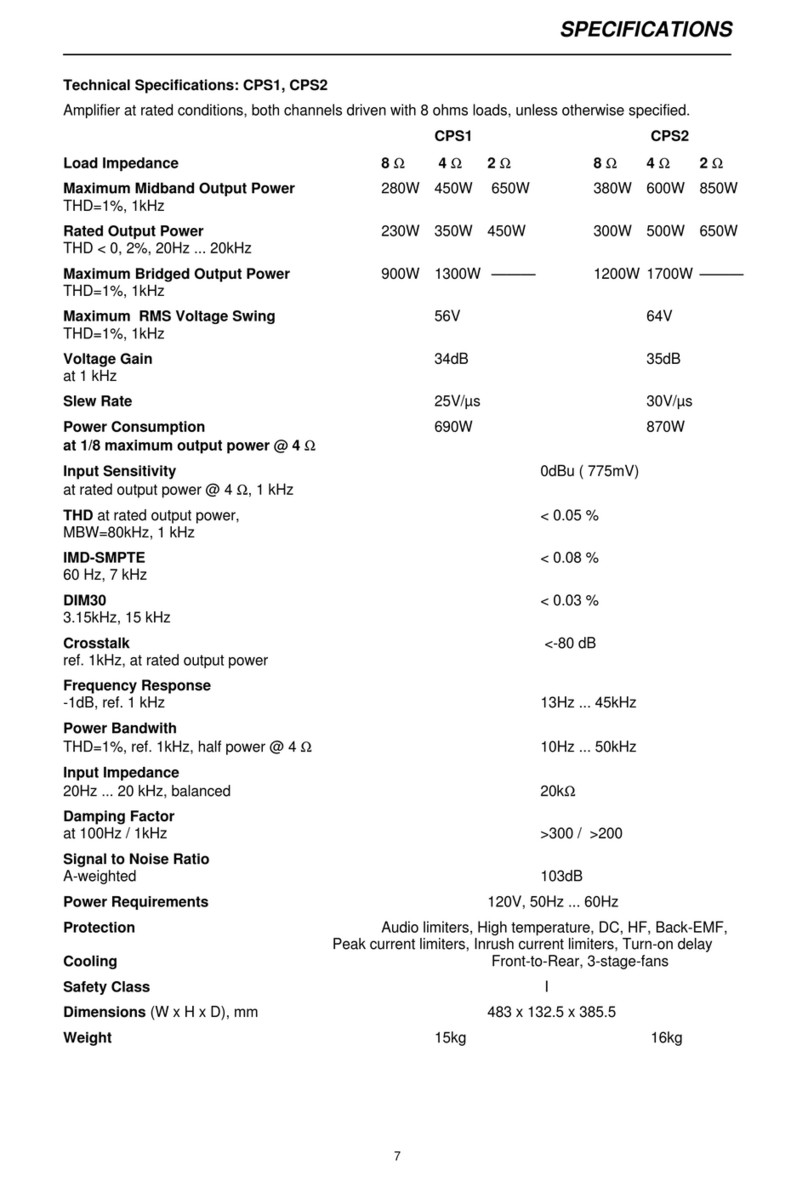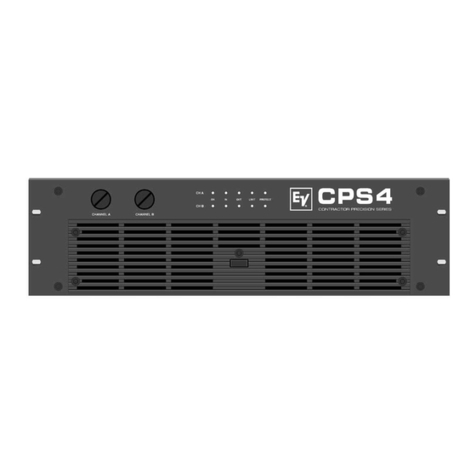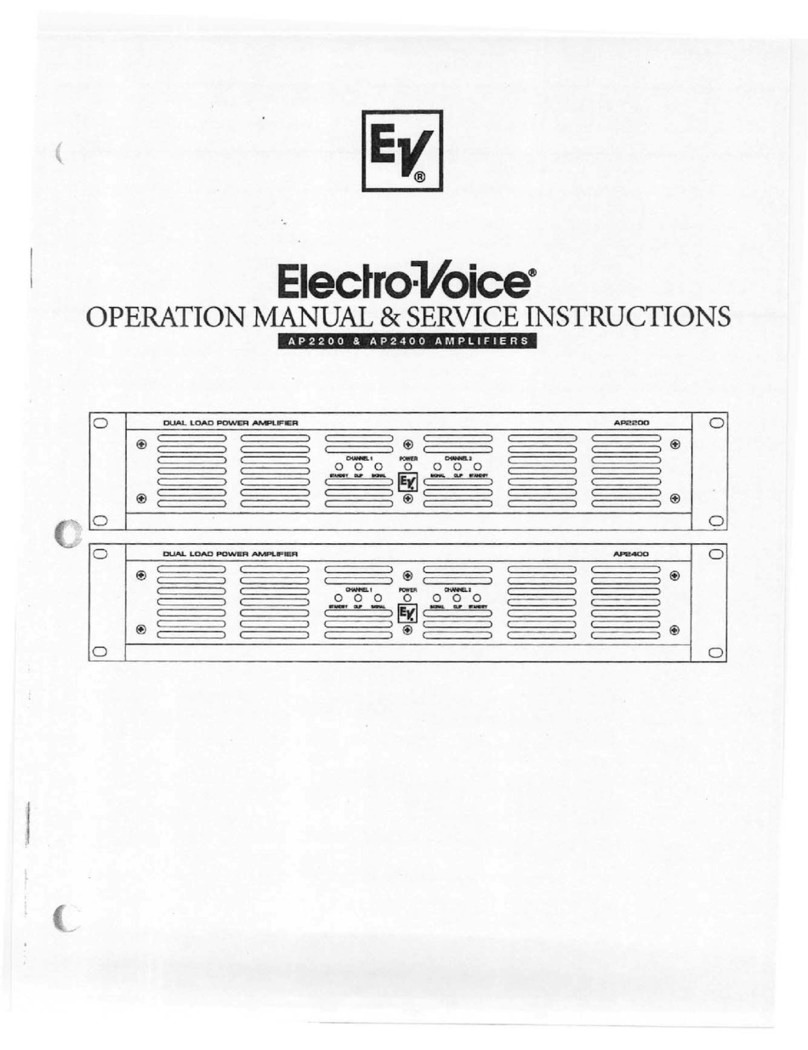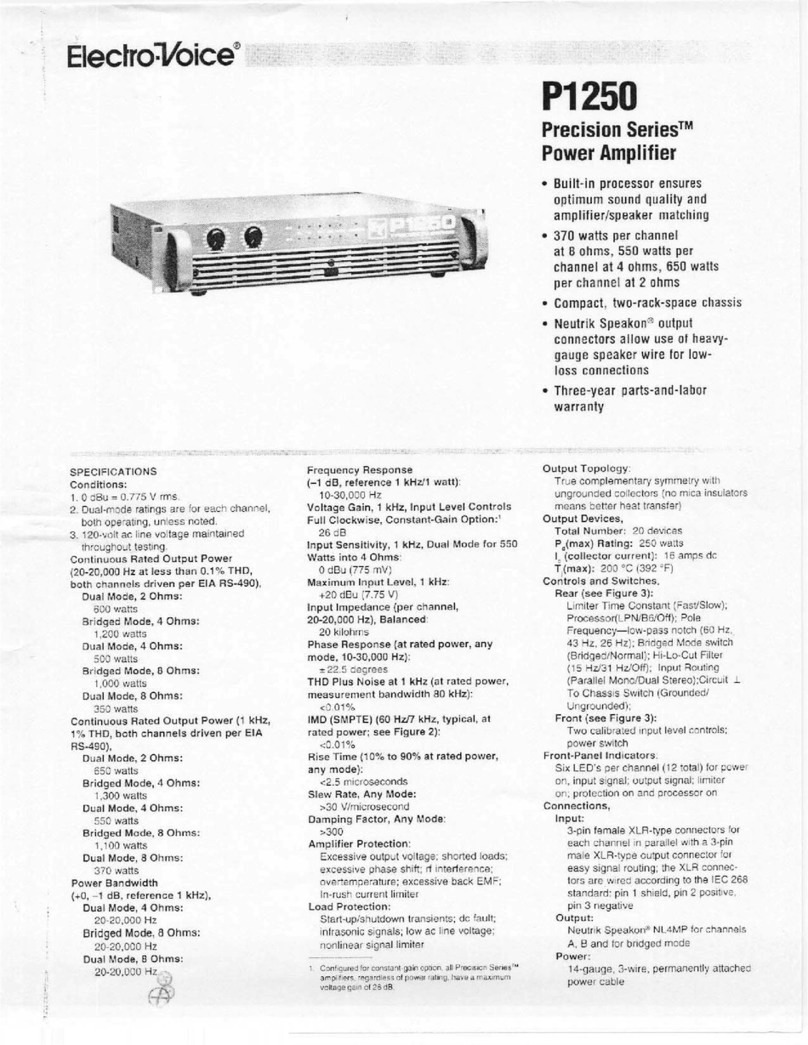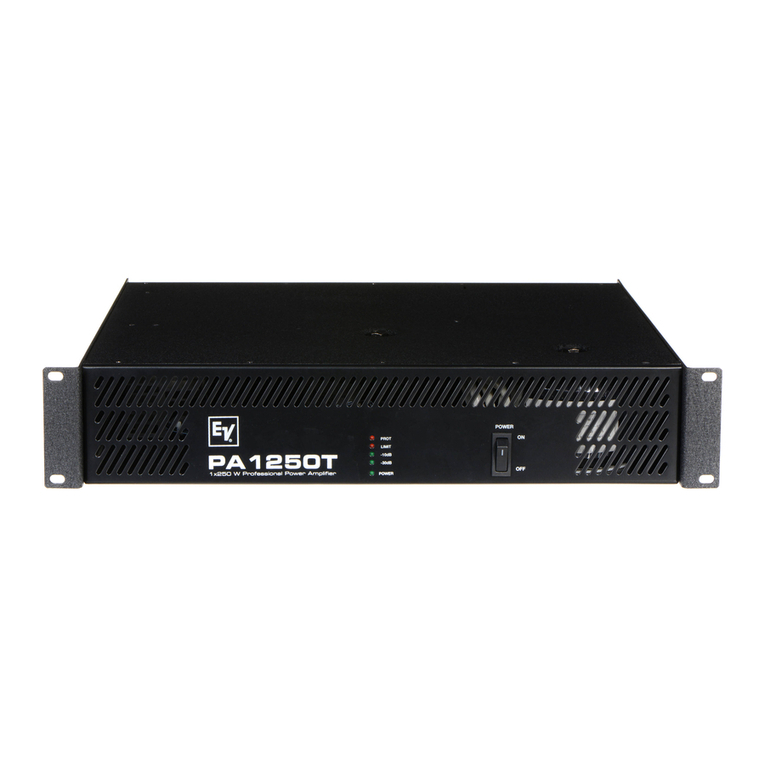
SERVICE MANUAL FOR SX300A AMPLIFIER
age of the amplifier, it is probably because the
driver sensing wire is not connected.
VR103 is avariable resistor that sets the maxi-
mum power delivered to the tweeter on the
P300SX.
•Connect the output of the amplifier directly to
as a 4-ohm resistive load capable of dissipating
at least 35 Watts of power. The crossover cir-
cuit should not be connected (or should be by
passed).
•Put an AC voltage meter across the amplifier
output capable of measuring up to 15 V.
•Ensure that the driver sensing wire (2-) is con-
nected to the output.
•Put the volume control to minimum.
•Supply asine wave input of 4Vat 1kHz.
•Slowly increase the volumn control while ad-
justing VR1 03 to make the amplifier output be
come 11Vwhen the volume control is at maxi-
mum.
•Once you have properly set VR103, we recom-
mend that you apply asmall amount of electri-
cal paint to the outside of the shaft to prevent it
from turning from acoustical vibrations.
NOTE: If VR103 does not change the output volt-
age of the amplifier, it is probably because the
driver sensing wire is not connected.
P300SX Bias Adjustment Procedure
This procedure adjusts the power transistor quies-
cent bias current using VR201
.
•Before powering on the amplifier, adjust VR201
to be in the full clockwise position. Note, in the
P300SX to access VR201 ,which is on the main
circuit board, you may have to disconnect the
passive crossover filter. Do so by removing the
red and black output wires, remove the white
driver protection wires by pulling the plug from
the main circuit board, finally, remove the four
screws that hold the crossover filter board to
the main circuit board.
•Set the volume control to minimum.
•Leave the driver output unconnected (i.e. no
driver, no resistive load)
•Connect aDC voltage meter to TP1 and TP2
on the main circuit board with the positive input
on TP1 and the negative on TP2.
•Power on the amplifier.
•Allow the amplifier to warm up for approxi-
mately 5minutes or longer.
•Slowly turn VR201 until the voltage meter reads
about 2.5mV (must be between 2mV and 8mV).
•When the bias voltage is adjusted properly and
the amplifier is switched on from acold stage,
the bias voltage will read approximately 20mV
but will decrease during warm-up to the operat-
ing voltage of 2.5mV.
•Once you have properly set VR201 ,we recom-
mend that you apply asmall amount of electri-
cal paint to the outside of the shaft to prevent it
from turning from acoustical vibrations.
NOTE: If the bias voltage is set too low (below
2mV), the amplifier will generate significantly
more harmonic distortion. If the bias voltage is
set to high (above 8mV), the amplifier will run hot
and at high bias voltages, it may overheat.
INITIAL TESTING
The first thing to do is to give the amplifier agood
visual check. This point should not be overlooked
as often one can spot many potential problems
visually. Look for parts that are bent or wires that
are frayed or broken. Check that none of the
wires on the main circuit board touch the chassis.
Check the main circuit board for signs of discolor-
ing, overheating or burning.
If the unit arrives in a"dead" condition, check that
each of the three fuses is good. Two of the fuses are
on the back of the main circuit board, the third fuse
is in afuse holder on the front panel. Remove this
fuse, check it, and replace it if necessary.
If the unit passes avisual check, connect the unit to
AC mains power, being careful to note whether it is
all OV, 220V or a240V unit. In doubt, temporarily
replace the transformer with one with which you are
familiar. Connect the transformer output to the plug
on the main PCB and apply AC mains power.
Check that the power switch lights up. Within 4to 5
seconds of applying the AC power, you should hear
the distinctive click of the output relay at it engages,
tf not, check the AC power source, the fuses, and
the transformer power cable.
The DC voltage at the amplifier output should be
less than ±6mV.
With the speaker protection sensing wires re-
moved, and with an 8-ohm resistive load and a
sine wave input at 1kHz at 0.775 V, you should
measure 14.4 Vacross the load. At 2Vinput,
you sould measure approximately 37 Vacross the
load and this should be the onset of clipping. The
output should be awell formed sine wave before
the clipping voltage is reached.
P300SX FINAL TESTING PROCEDURE
Agood test of the amplifier is to feed a1kHz
square wave into the input and observe the wave-
form across an 8-ohm resistor.
•Set the front panel slider switch to "Full Range"
•Connect an 8-ohm resistive load to the output.
•Connect asignal generator set at 10OmV; 1
kHz square wave to the input.
page 5

